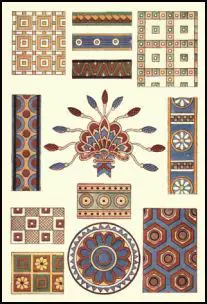A colour was more than just a color for the Egyptians as it represented their gods. It was believed that humans were not able to understand the gods, but used Egypt Colours to represent the power that these gods possessed.

Representation of Egypt Colours
Green
The colour green represented vegetation, new life, and fertility. All actions that preserved the fertility of land or promoted greenery were associated with ‘green’. However, the ancient Egyptians recognized the cycle of growth and decay and so green was also associated with death and the power of resurrection.
White
The color white was suggestive of omnipotence and purity. Due to its lack of color white was also the color of simple and sacred things. The name of the holy city of Memphis meant “White Walls.” People also wore white sandals at holy ceremonies.
Yellow
In ancient Egypt yellow (khenet, kenit) represented something that was eternal and could not be destructed, and which was closely associated with gold (nebu or nebw) and the sun. Gold was thought to be the substance which formed the skin of the gods and numerous statues of the gods were either made of gold or covered with gold leaf and the skin of the god was often painted gold in two-dimensional images.
Blue
Blue was symbolic of the sky and of water. In a cosmic sense, this extended its symbolism to the heavens and of the primeval floods. In both of these cases, blue took on a meaning of life and re-birth.
Red
Red was expressive of life and victory, as also of fury and fire. Many Egyptians painted their bodies red during spiritual ceremonies to portray their dedication to the goal.
Black
The colour black represented death and the afterlife to the ancient Egyptians. The Egyptians also associated black with fertility and resurrection because much of their agriculture was dependent on the rich dark silt deposited on the river banks by the Nile during the inundation.